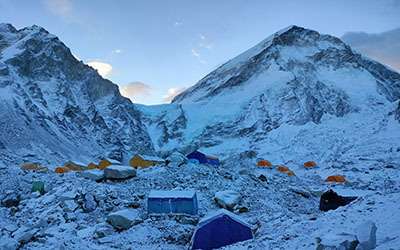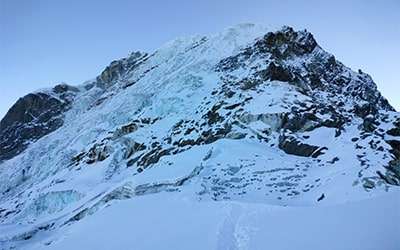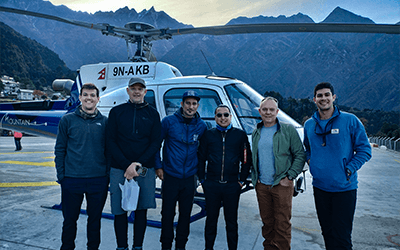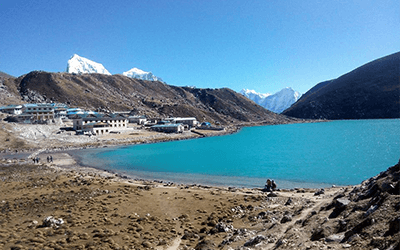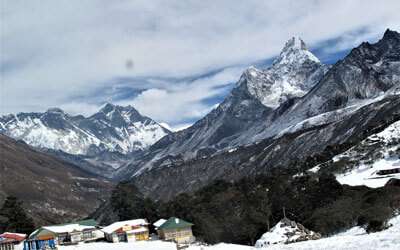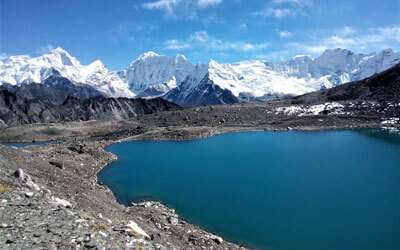Island Peak climbing trip fulfills the dream of every amateur and serious climber, who have been seeking the thrill of adventure and wish to widen their experience towards the peak climbing expedition beyond simply trekking in Nepal. Island Peak, also known as Imja Tse (6189 m / 20,305 ft), lies to the south of Everest and is one of the most popular trekking peaks. It was named Island peak by Eric Shiptons in 1953, as the peak resembles an island in a sea of ice when viewed from Dingboche. Climbing Island Peak is well within the reach of any fit and determined trekkers as it is not technical, though demanding snow climb
Our professionally designed Island peak climbing itinerary takes you to the acclimatization hike to the most popular trekking destination of Everest Base camp and Kala-Pathar first for the closeup views of Everest before scaling the peak. Heavenly place commanding views of the beautiful glistening ice flutings between Amadablam and Kang Leyamu and the incredible Lhotse South Face, a soaring wall to 3200 meters are some of the breathtaking highlights on the way to Island peak base camp. We head for Island peak climbing after the essential climbing practice course briefed and instructed by Climbing Sherpa on various aspects of climbing techniques. Your historical effort to summit the peak will be rewarded with probably one of the best panoramic views in the world as you feel Lhotse, Nuptse, Baruntse, Ama Dablam, and Makalu are almost touching the tip of your nose. Descending with a sense of achievement, our route takes us into many cultural sights; Pangboche, a traditional Sherpa village; Thyangboche, famous for its ornately decorated Tibetan monastery and Khumjung with Hillary school inside the clouds and mysterious Yeti scalp.


